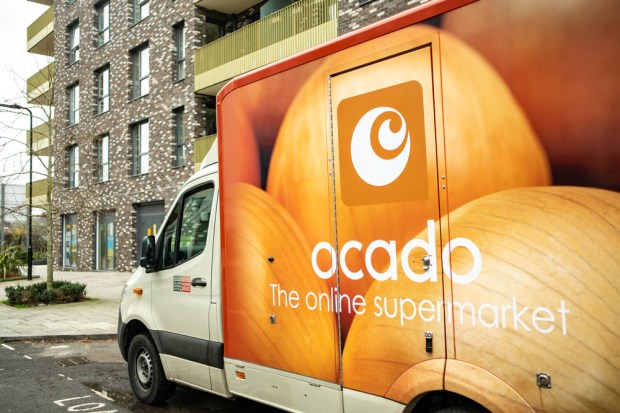
As digital merchants compete for consumers’ growing online grocery spending, Ocado Group said one of the biggest challenges to driving penetration across the industry is key players’ ongoing failure to deliver items accurately and on time.
The British grocery technology company is part of PYMNTS’ CE 100 Index, a measure of 100 publicly traded companies that tracks the digital transformation and growth of the connected economy. It argued on a call with analysts Thursday (Feb. 29) discussing its full-year 2023 earnings results that many players in the space are failing to stick the landing.
Discussing the company’s Ocado Retail joint venture with United Kingdom department store chain Marks and Spencer, Ocado CEO Tim Steiner contended that reliability remains a key challenge.
“We are over 99% items delivered as promised, 95% on-time delivery, and a great doorstep experience,” he said. “Getting the basics right in online grocery is the most critical thing. And it’s amazing — I’ve been in this industry now for 24 years — how few players there are in the world that can actually deliver what they promise to a customer on their doorstep on time.”
The two owners of the joint venture have been coming to a head, the Financial Times reported Thursday, following a decrease in demand last year, with Ocado said to be threatening legal action.
Ocado has a vested interest in downplaying the reliability of competitors, but the somewhat low penetration of eGrocery relative to other kinds of online retail suggests that consumers are indeed not yet as satisfied with the digital experience in the category as they are with other eCommerce platforms.
Take, for instance, the United States consumer. The PYMNTS Intelligence study “Consumer Interest in an Everyday App” found that just 16% of U.S. consumers who had purchased groceries in the previous 30 days did so exclusively using internet-connected devices. In contrast, 24% of restaurant customers did the same, as did 39% of retail customers.
Still, online grocery adoption seems to be on the rise. Ocado reported a 10% year-over-year revenue increase in fiscal 2023 and a 7% boost in Ocado Retail while mitigating losses. Similarly, in the U.S., Walmart, the nation’s leading grocer, reported a 17% year-over-year rise in eCommerce sales on its most recent earnings call.
Consumers who engage digitally with grocers spend more than those who do not. For instance, PYMNTS Intelligence’s study “Tracking the Digital Payments Takeover: Catching the Coming eCommerce Wave” found that consumers spend $88 on their average in-store grocery purchase. Conversely, eGrocery customers spend $116 on average per purchase.
Additionally, the “Can New Use Cases Drive Consumer Use of Digital Wallets?” edition of the same series of reports revealed that grocery shoppers who pay digitally, whether in stores or online, tend to spend more. Specifically, the study found that those using digital wallets to pay for groceries spent $96, on average, on their most recent purchase, while those not using digital wallets spent $92.
As consumer interest in eGrocery continues to grow, evidenced by Ocado’s revenue increase and Walmart’s eCommerce sales surge, there’s an indication of a shifting tide toward digital engagement. With consumers demonstrating a willingness to spend more digitally, particularly in the realm of groceries, the future of online grocery shopping could hold promise for merchants, provided that key players can rise to meet the demands of convenience, accuracy and reliability.